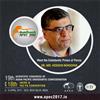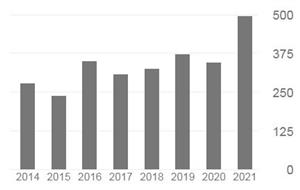The Role of Stem Cell Therapy in Regeneration of Dentine-Pulp Complex: A Systematic Review
Abstract
Infection of the dental pulp will result in inflammation and eventually tissue necrosis which is treated conventionally by pulpectomy and root canal treatment. Advances in regenerative medicine and tissue engineering along with the introduction of new sources of stem cells have led to the possibility of pulp tissue regeneration. This systematic review analyzes animal studies published since 2010 to determine the ability of stem cell therapy to regenerate the dentine-pulp complex (DPC) and the success of clinical protocols. In vitro and human clinical studies are excluded and only the experimental studies on animal models were included. Dental pulp stem cells constitute the most commonly used cell type. The majority of stem cells are incorporated into various types of scaffold and implanted into root canals. Some of the studies combine growth factors with stem cells in an attempt to improve the outcome. Studies of ectopic transplantation using small animal models are simple and non-systematic evaluation techniques. Stem cell concentrations have not been so far reported; therefore, the translational value of such animal studies remains questionable. Though all types of stem cells appear capable of regenerating a dentine-pulp complex, still several factors have been considered in selecting the cell type. Co-administrative factors are essential for inducing the systemic migration of stem cells, and their vascularization and differentiation into odontoblast-like cells. Scaffolds provide a biodegradable structure able to control the release of growth factors. To identify problems and reduce costs, novel strategies should be initially tested in subcutaneous or renal capsule implantation followed by root canal models to confirm results.
Keywords: Dentin-Pulp Complex, Dentinogenesis, Regenerative Medicine, Stem Cell Therapy, Tissue Engineering.














